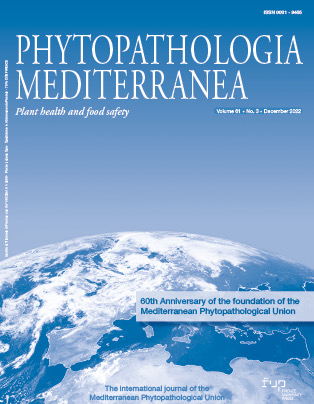Published 2022-11-25
Keywords
- White rot,
- xylem,
- cell wall degradation,
- CODIT-model,
- Fomitiporia mediterranea
- Phaeomoniella chlamydospora ...More
How to Cite
Abstract
Wood colonizing fungi are specialists that exploit the lignocellulose of cell wall components in host wood cylinders as a carbon sources. Some of these specialized fungi, including Fomitiporia mediterranea (Fmed) and Phaeomoniella chlamydospora (Pch), cause the disease Esca of grapevine. This disease complex includes grapevine leaf stripe disease (GLSD) of canopies and white rot and black wood streaking in trunks. The present study gained insights into the activity of Esca pathogens in host xylem of the trunk tissues at an anatomical level. Lesions with white rot and brown wood streaking were microscopically analyzed, and the structures of affected tissues were compared with intact xylem. In trunks with white rot, demarcation zones separated intact tissues from the lesions. Immediately adjacent to the demarcation zones, cell wall decomposition initiated in the xylem. At this initial stage, cavities appeared in the secondary cell walls of libriform fibres, which expanded and closely resembled the degradation pattern of soft rot. In the advanced stage, the fibre cell walls were completely decomposed, and the vessels were attacked with a degradation pattern similar to white rot. Only remnants of the xylem elements remained, forming amorphous matrices. These decomposition patterns occurred in field samples and in wood cores artificially infected with Fmed. The obvious compartmentalization of the tissue affected by Fmed indicated a defense reaction in the xylem, according to the CODIT model. In contrast, brown wood streaking affected only small groups of vessels, adjacent libriform fibres and parenchyma. Dark inclusions in cells and tyloses in vessels indicate a defense reaction against the pathogens causing brown wood streaking. Artificial inoculation of sterile wood cores with Pch confirmed the contribution of this pathogen to brown wood streaking. This research provides insights into the structural and functional anatomy of intact and infected tissues of grapevines, which clarify the etiology of Esca, and provide new knowledge for developing new approaches to control of this disease complex.







